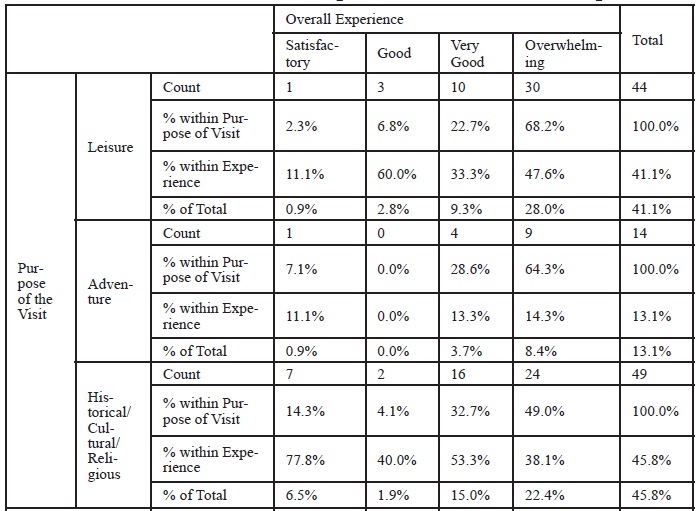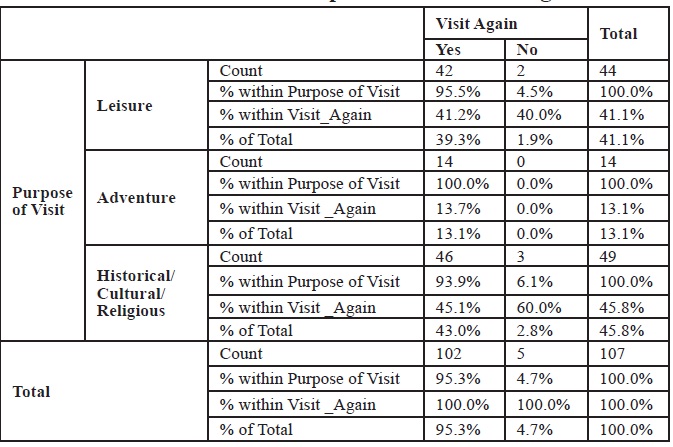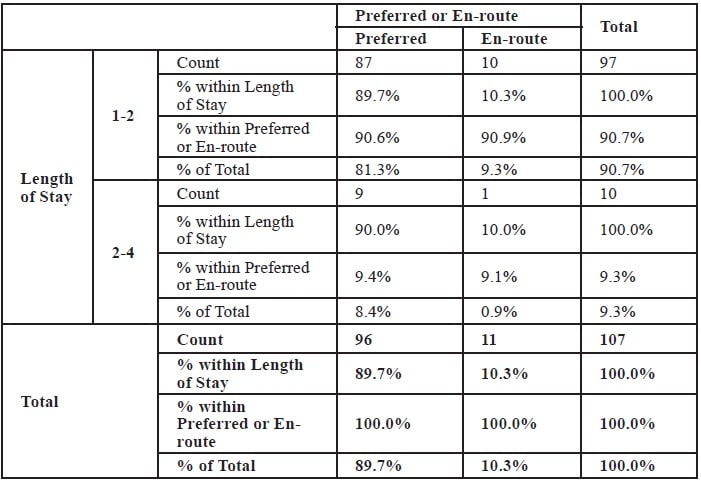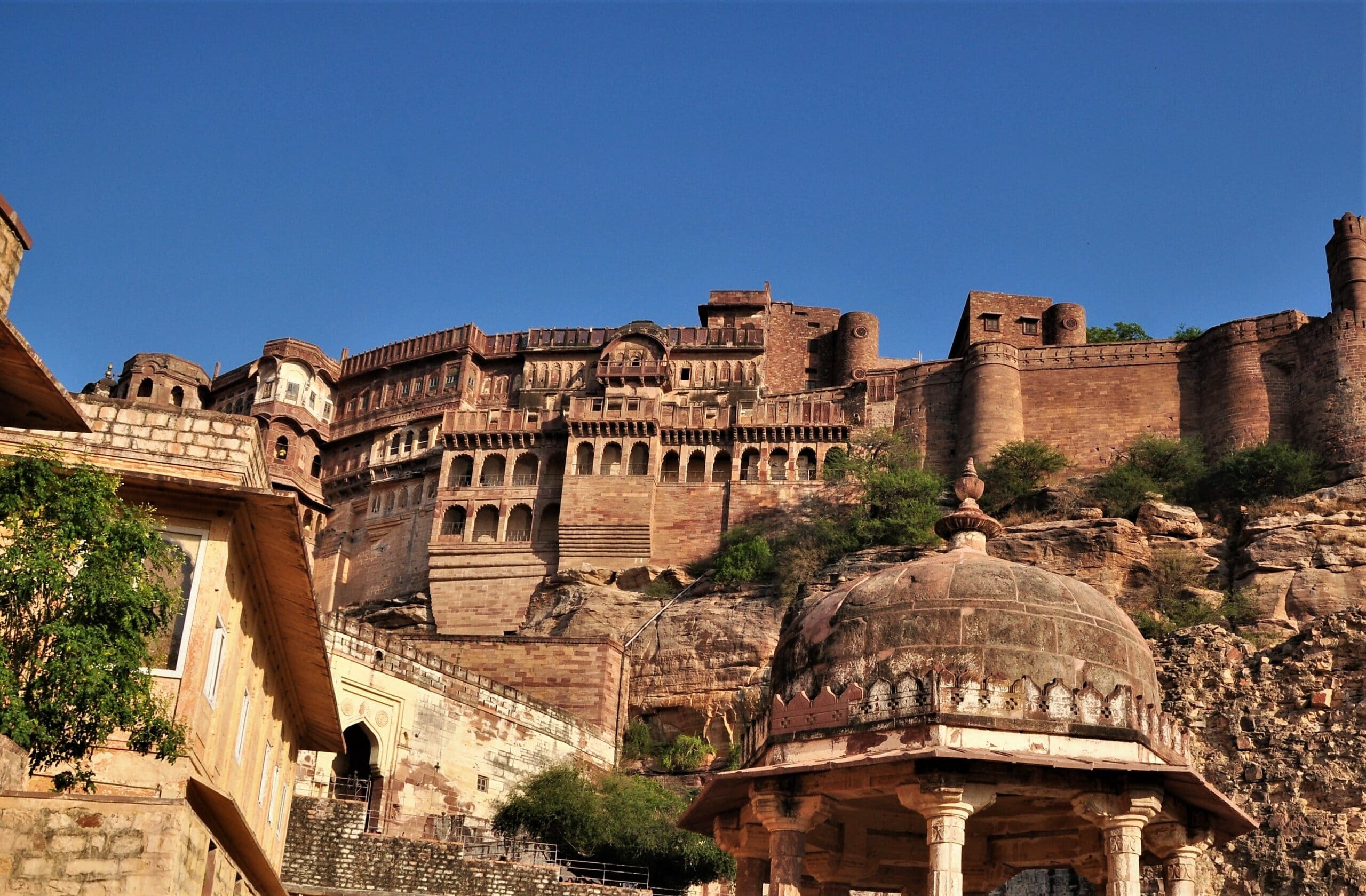THE ROYAL FAMILY OF JODHPUR AND THEIR EFFORTS IN PROMOTING TOURISM IN MARWAR-A CASE STUDY OF THE MEHRANGARH MUSEUM TRUST
Rajasthan exemplify the rich and traditional culture India possesses. It is perhaps the only state that endures an enigma to the traveler, long after the vestiges of the royals have perished. Here the tradition blends with modern, resonating exuberance. The culture of Rajasthan is most admired amongst international tourists. Consequently Jodhpur as a destination is selected for the purpose of this study, here the tourism construction of Rajput history is seductive by nature. Therefore, the purpose of this paper revolves around describing the present state of tourism activities at Jodhpur. The aim of the study is to find out the role of the royal family in developing and promoting tourism in the region, and to explore various activities organised by the Mehrangarh Museum Trust to attract the tourists from the national and international market.
INTRODUCTION
Rajasthan’s golden soil echoes the history of its bygone era. One of mankind’s earliest civilisations the Indus Valley, had its base in Rajasthan. Famed for its architectural grandeur, Rajasthan is home to the beautiful history and culture of the past that your eyes can treasure. The present day Rajasthan earlier in history was divided into several regions namely Marwar, Mewar, Hadoti, Dhundhar, Vagad, Mewat, Godwar and others.
Marwar derives its name from the Maroo-war or the “region of death”. Tod has relied on several sources for his story of Marwar. Among these is an ancient fifty-feet long roll obtained from the temple of Nadolaye, a small town in Marwar. A second is another roll of great antiquity, while the third authority is Surya Prakash, composed by the bard Kurnidhan which consists of 7,500 stanzas of poetic history. The other chronicles are Raj Roopac Akheat which relates to the period after AD 1679, and Beejy Vulas a poem of 100,000 couplets; and finally a work simply named Kheat, meaning a story. Tod supplemented the facts gleaned from these chronicles with conservations with the sovereign, his nobles, ambassadors and subjects. Most of these sources are barren of events and history at first, but full of the same as we advance into later history as stated by Annals and Antiquities of Rajasthan (2008).
Jodhpur popularly known as the Sun city is the capital of Marwar, which had Nagore, Merta, Phalodi, Shergarh, Barmer, Jalore, Sanchore, Osian, Pali, Sojat, Bilara and Jaitaran as its comportments. The oldest of Rajputana’s great cities, Jodha’s Jodhpur preceded Bika’s Bikaner by thirty years, Udai Singh’s Udaipur by more than a hundred years and Jai Singh’s Jaipur by nearly three centuries. Perhaps the most charming, she has played hostess to kings,emperors and tsars; to worthy saints and celebrated soldiers; to many a distinguished statesman of our times and of times passed by. Not the richest, she stands alone as the cultural and spiritual capital of this “Land of Kings” (Marwar-Jodhpur, 1996 what is this reference?) 12th May, 1459 Rao Jodha (1438-89) laid the foundation stone of Mehrangarh Fort and city of Jodhpur, was named after him. Rathors rulede Marwar from Jodhpur till the merger of the princely state with the dominion of India, on 31st March,1949 (Marwar-Jodhpur, 1996 what is this reference?).
After 1947 the state of Marwar was divided into Jodhpur, Pali, Jalore, Barmer, and Nagore districts. Jodhpur district is further divided into Phalodi, Luni, Shergarh, Osian, Bilara, Bhopalgarh and Jodhpur tehsils. Jodhpur also known as the Sun city holds a charm of its own. The city has a historic gateway, which takes you to the magnificent past and makes you flabbergasted. The city is popularly known for its culture and tradition, fairs & festivals, forts & palaces, food& fine, and last but not least its people and time. Jodhpur has all the flavours a tourist is looking for, it has its past in hand on a flight to the future. Today Jodhpur is one of the preferred destinations amongst the tourists when it comes to Rajasthan, the credit here goes to former Maharaja Gaj Singh II.
About Gaj Singh II
Gaj Singh II was born on 13th January 1948. He is a former member of the Indian Parliament and a former High Commissioner of India. He was the Maharaja of Jodhpur from 1952 until the royal powers, privileges and privy purses were abolished by an amendment to the Constitution of India in 1971.
Gaj Singh was born the only son of Maharaja Hanwant Singh of Jodhpur by his wife, Maharani Krishna Kumari of Dhrangadhra. Singh belongs to the Suryavanshi (origin from the Surya-Kula) family of Rajputs. He succeeded to the titles and dignities of his father when he was only four years of age in 1952, when his father died suddenly in a plane crash. He was enthroned shortly afterwards.
The infant and his siblings were raised by their mother, Rajmata Krishna Kumari. At the age of eight, Gaj Singh was sent first to Cothill House, a prep school in Oxford shire England, and then to Eton College and Christ Church,Oxford; where he obtained a degree in Philosophy, Politics and Economics. In 1970, Gaj Singh returned to Jodhpur to take up his duties as the Maharaja of Jodhpur and head of the Rathore clan. In 1973, he
married Hemalata Rajye, daughter of the Raja of Poonch, a major feudatory state of Kashmir e and his wife Princess Nalini Rajye Lakshmi Devi of Nepal. They are the parents of two children: daughter, Shivranjani Rajye born on the 22nd August 1974, and son, Shivraj Singh born on the 30th September 1975.
A pioneer in conservation of culture, forests, wildlife, sports and heritage Gaj Singh II today stands tall amongst the former rulers of India. His field of action is varied, covering the entire gamut of social and cultural life, his programmes were imaginative, and his team was highly motivated.
As the founder patron of the Jodhpur Polo and Equestrian Institute, he strived not only for the revival of the sport in Jodhpur but also, more importantly, the preservation and enhancement of indigenous equine and bovine strains.Two of these are the Marwari horse, that unsung hero of Rathore history, and the humped Nagori bull which resembles that on the Mohenjodaro seal, more closely than any other Indian strain as reported by The House of Marwar (1994) .
Jodhpur’s ex-princely ruler is like other former royals around the world, reconstructing the symbols and meanings associated with royalty opine Cohn (1983) & Galey (1989).
“In my experience traditional leaders are best able to engineer change because the people trust them”- Gaj Singh II
Mehrangarh Museum Trust
The Managing Trustee of Mehrangarh Museum Trust (MMT) Gaj Singh II, soon after his return from England in the 1970s, envisioned and created several initiatives that would bring real and meaningful change to the heritage conservation sector. The first such initiative a pioneering one at the time, was the decision to establish a museum of international repute at Mehrangarh Fort. At the same time Gaj Singh II placed his ancestral fortress the Mehrangarh Fort in Jodhpur, at the disposal of the new Trust; directing it to develop and establish the planned museum within the fort premises itself. This was a significant and far-sighted direction, since the fort eminently serves the purpose not only in terms of historicity and authenticity, but also keeping in mind the security and care of the collections.
Needless to say the conservation and restoration where necessary, of the magnificent architecture of the fort itself was also a prime consideration behind this decision. Initially it seemed a distant dream, yet today the same dream is a flourishing reality. So in order to preserve and promote the heritage, the Mehrangarh Museum Trust was established in 1972 by the 36th Custodian of Marwar- Jodhpur, Maharaja Gaj Singh II.
The Trust was duly registered with the Government of Rajasthan in 1974 and commenced functioning in earnest in the same year. The success of Gaj Singh II’s vision and the Trust’s early efforts is evinced by its recognition. The Mehrangarh Museum enjoyed 143978 foreign visitors and 885453 Indian visitors in 2013-2014 as documented by the Statement of Visitors at the Fort since April 1979 [Letter written June/July, 2015].
New dimensions have been added to the Trust’s activities since then. The active patronage of the arts and music, the promotion of the handicrafts of the region, and the study and research of the rich archival and other material available in the Trust’s manuscript library, the Maharaja Maan Singh Pustak Prakash Research Center are all marquee accomplishments. With the Trust’s strong and ever-widening social and cultural interaction with the city and region, the Mehrangarh Fort today finds itself once again, after over a hundred years, very much at the center of things in Marwar.
The Museum has participated in many international exhibitions all over the world and won many awards including the Festival of India in America in 1985; displaying and sharing the rich heritage of Marwar, and interacting with prestigious institutions in the field. The Mehrangarh Museum Trust is a recipient of the UNESCO Asia-Pacific Award in the field of architectural conservation, cultural heritage and adaptive reuse and is also a recipient of Fassa Bortolo, Hadrian Award etc. The 12th century Nagaur Fort Ahhichatragarh, restored by MMT, is UNESCO’s award win ning site recognized as a model for architectural conservation, and is an international center for wall painting conservation, through partnership with the Courtauld Institute, London. Recently, Ahhichatragarh has been shortlisted for the prestigious Aga Khan Award for Architecture.
Activities To Attract International Tourists
Table 1: Activities To Attract International As Well As Domestic Tourists

Rajasthan International Folk Festival (RIFF)
The Trust actively promotes classical Indian and folk music and organizes concerts in the Fort. From 2007 the Fort hosts an annual festival of regional, national and international folk music in October called the Jodhpur RIFF (Rajasthan International Folk Festival). Conceived and delivered in partnership with the Jaipur Virasat Foundation, to provide an opportunity to folk musicians at the international level in order to promote folk music.
World Sufi Spirit Festival
The World Sufi Spirit Festival, an annual music festival to gather various Sufi traditions across the globe at one platform, is also being organised in the month of February since 2007.
Jodhpur Flamenco & Gypsy Festival
The Jodhpur Flamenco & Gypsy Festival that started in 2014 itself, is organised in collaboration with CRN Productions, to present the best flamenco traditions in India and provide an opportunity for the musicians from different gypsy traditions to collaborate, learn from each other and create beautiful music. Jodhpur Flamenco and Gypsy Festival has based its foundation on the very fact, that the Rajasthani folk music and Spanish Flamenco resonate with many common threads and the advent of this festival in India has created a unique musical experience.
Museum Trails
The structure of the old fort remained the same, but the carved facades and battlements were repaired and the areas which housed soldiers and members of the royal family were renovated, and turned into display spaces for weapons, paintings textiles and other artefacts. This is a dynamic ongoing process at Mehrangarh, and improvements are always underway. You only have to take an audio tour of the fort to be completely mesmerised by its chowks, palaces, and temples. On our first visit we had felt enormous pride at this world class museum stated Mangaldas, M. D., & N. G. (2014, October).
Activities To Attract Domestic Tourists
Jodhpur Foundation Day-12th of May of every year is celebrated as the Jodhpur foundation day. The day is marked with various activities being organised by MMT to celebrate the day. There are various other events
such as Gangaur Puja, Navratri, Janmasthmi etc are celebrated to keep the domestic tourist attraction alive.
New Initiatives
Desert Rock Park-Rao Jodha Desert Rock Park was created in 2006 to restore the natural ecology of a large, rocky wasteland nest to fort.
Flying Fox-Flying fox was introduced for visitors to have an entirely new perspective of Mehrangarh. With this tour, the visitor gets a chance to explore and enjoy the flora and fauna of the landscape, and breathtaking
views of the fort along with its hidden lakes observed Jasaol, K. S. (2014, May 6th)
Chokhelao Garden-The garden of Chokhelao the only garden within the Mehrangarh fort, was laid out in 1739 A.D.by Maharaja Abhai Singh, as an extension to the Chokhelao palace. Chokhelao garden sits at the foot of the Mehrangarh Fort. This over two hundred year old garden has recently been restored (2007), complete with the scents, sounds and textures of a garden of the eighteenth century Marwar.
The garden today, as in the past, is truly a celebration of nature as it captures the changing colors of the seasons in the upper terrace of the flower beds. It is equally magical for night viewing when the Mehtab Bagh or moonlight garden laid out in the lower terrace comes alive, with the white flowers of chandni (Tabernaemontana coronaria) and the sweet smelling kamini (Maurya exotia). While paintings capture the activities in the garden in the form of music and dance performances in pavilions and terraces within the garden, romantic interludes in the shade of trees of the orchard area, holding durbans on platform under colourful awnings; the garden today houses a restaurant in the upper most terrace, which enjoys the spectacular view of the garden and the ramparts of the city of Jodhpur beyond.
Heritage Walk-Heritage walks are being organised to make tourists aware of the beautiful and mesmerising history of the city with a live on experience. The blue houses, ancient temples, historic havelies add charm to the
walk.
Audio Tour– Stated in the year 2003. The audio tour is one of the best experiences the tourists can have at Fort and is must for every visitor.
OBJECTIVE OF THE STUDY
The main objectives of the proposed study are as under:
• To find out the various efforts been taken by Mehrangarh Museum Trust to promote tourism in Jodhpur
• To find out various activities organised by the trust to attract tourists at national and international market
• To find out the vision of Gaj Singhji II in order to promote and preserve the traditions
A number of specific research questions and issues emerged and were further refined in the course of developing the research design.
METHODOLOGY
Research Design
Research design selected for the study is descriptive in nature, where the objective is to describe the present state of tourism activities of the Jodhpur Mehrangarh Fort, tourist’s experiences about various destinations at Jodhpur and efforts of the royal family in promotion and growth of tourism in the Marwar tourist regions of Rajasthan.
Data Collection
The data collection method includes both primary and secondary data collection techniques. In the secondary mode of data collection, extensive books were studied from various places around t Jodhpur, especially from the The Maharaja Maan Singh Pustak Prakash. The library within the fort itself, houses a rich collection of manuscripts from different periods on a variety of subjects; in all about three thousand in Sanskrit, and two thousand Hindi and Rajasthani manuscripts besides five thousand bahies or accounts and other documents. The questionnaire includes both open and close ended questions for suggestions and other information.
Sample Size and Sampling Technique
The samples selected for the study are the national and international tourists visiting Jodhpur. The selection of the sample was based on random sampling, where the responses were collected at the fort on a random basis. In the primary mode of data collection, structured interview with the help of a questionnaire has been taken from around 107 tourists (both national and International). Besides that, excerpts from the conversation with Gaj Singh II, Karni Singh Jasol Director Mehrangarh Museum, and from some other important persons were also taken.
Limitations of The Study
Due to time and resource restraints in this study, the sample size was limited to 150 only, out of which 107 respondents provided their responses properly. Thus, it may found too narrow in scope to generalize findings of this
study and extend to the full population.
ANALYSIS & FINDINGS
A sample of national and international tourists has been taken for the purpose of the present study. In order to study the present state of tourism activities of Jodhpur Mehrangarh Fort and its future, a structured questionnaire
was prepared and 107 tourists were asked to respond to it.. Out of which 87 were international and 20 were national tourists.
Descriptive Analysis
This part of the analysis of the research portrays descriptive statistics for the sample selected for the study.
Purpose of Visit
The purpose of the visit of the tourists has been shown in the figure 1.

This finding shows that 49 % tourists like to visit Jodhpur for historical, cultural and religious purposes. Whereas, 44% tourists like to visit Jodhpur for leisure activities. Only 14 % tourists travel to Jodhpur for adventurous
activities.
Mode of Transport

Findings in Figure 2 shows, that 35% tourists usually travel on the railways. Besides that 28 % prefer to travel from roadways and 23% like to travel from their personal vehicles.
Popularity of Jodhpur

Figure 3 finding show that, 95% tourists like the fort as compared to religious sites, food & cuisines, and blue houses. This can help to find out the popularity of the fort among tourists.
Length of Stay

As shown in the figure 5.5, 90.7% tourists like to stay for one or two days to visits destinations at Jodhpur. Only 9.3% tourists stated 2-4 days as their length of stay. None of the respondents would like to stay more than 4 days
in Jodhpur.
Jodhpur as a Preferred or En-route Destination

Figure 5: Preferred or En-route Destination
This finding in Figure 5 shows that 96% tourists prefer to visit Jodhpur, whereas only 11% tourists visit Jodhpur as an en-route destination. This helps to draw the conclusion, that Jodhpur is the preferred destination to visit.
Most Liked Activity/Gallery

Figure 6 states that 94 % respondents prefer to go for the audio tour at Mehrangarh Fort, whereas only 3% tourists like to go for the Zip tour and Souvenir shop.
Overall Experience towards Jodhpur

Figure 7: Overall Experiences towards Jodhpur
Figure 7 shown above portrays the overall experience of respondents towards Jodhpur as a tourist destination. 58.9% reported a overwhelming experience, whereas 28% respondents found it very good tourists destination.
8.4% tourists were satisfied with the locations whereas 4.7 % reported it as a good experience to visits Jodhpur.
Cross-Tabulation Analysis A cross-tabulation describes two or more variables simultaneously. It is the merging of the frequency distribution of two or more variables in a single table states Malhotra (2007, p. 498). The present section will highlight cross-tabulation between few important variables. which may produce significant results for the objectives of this study.
Table 2: Cross-Tabulation: Purpose of Visit * Overall Experience


The above Table 2 represents cross-tabulation between tourists purpose to visit Jodhpur and their overall experience for the same. The above figure states that respondents who visit Jodhpur for the purpose of leisure activities, 68.2 % have an overwhelming experience and 22.7% respondents have a very good experience. Respondents who visit Jodhpur for the purpose of adventurous activities, 64.3% have an overwhelming experience and 28.6% respondents have a very good experience. Respondents who visit Jodhpur for the purpose of historical or cultural or religious activities, 49% have an overwhelming experience and 32.7 % respondents have a very good experience. Thus, overall 58.9% respondents have an overwhelming experience and 28% respondents have a very good experience.
Table 3: Cross Tab: Purpose of Visit *Visit Again

The above Table 3 represents cross-tabulation between tourists purpose to visit Jodhpur and their choices to visit again. The table portrays interesting facts that respondents who visits Jodhpur for the purpose of leisure activities, 95.5% would like to visit again. Respondents who visit Jodhpur for the purpose of adventurous activities, 100 % would like to visit again. Respondents who visit Jodhpur for the purpose of historical or cultural or religious activities, 93.9% would like to visit again. Thus, overall 95.3% respondents would like to visit Jodhpur again.
Table 4: Cross Tabulation: Length of Stay *
Preferred or En-route Destination

The above Table 4 represents cross-tabulation between tourists length of staying at Jodhpur and Jodhpur as a preferred destination or en-route destination. The data of the table shows that respondents whose length of stay
is 1-2 days 89.7%visit Jodhpur as a preferred destination and 10.3% visit Jodhpur as en-route destination. Respondents whose length of stay is 2-4 days, 90% visit Jodhpur as a preferred destination and 10% visit Jodhpur
as an en-route destination.
INTERPRETATIONS
On the basis of above survey and interview discussion, the following interpretations can be made.
• The purpose of the visit of most of the tourists is either leisure or historical or cultural.
• The mode of transport tourists prefer is private vehicle, roadways or the railways. With only 14% tourists choosing air connectivity, show the need of more flights to fill the gap.
Due to the continuous effort of the Mehrangarh Museum Trust to maintain the fort, the tourists prefer it as Very Different experience compared to other forts in India.
• The Mehrangarh Museum Trust has started up a number of programmes viz. Rajasthan International Folk Festival (RIIF), Sufi Nights, Jodhpur Flamenco and Gypsy Festival to attract tourists continuously.
• The restoration of the Chokelao Garden and Desert Rock Park are the other important initiatives, undertaken by MMT to attract domestic as well as International Tourists.
• The Audio Tour, one of its kinds is one of the USP of the Mehrangarh Fort visit and is liked by all.
• The clean toilets and a cafe with multiple cuisines and royal decorum are again liked by all tourists.
• Almost of the tourists stated in the interview ,that they would like to come here again making it attractive for repeat tourism.
• The overall experience of tourists differs on the basis of their purpose of visits. But with the help of the cross-tabulation analysis, it can be interpreted that their overall experiences ranges between overwhelming to very good.
• Almost all the respondents rated Jodhpur as the preferred destination over en-route destination.
• The length of stay of tourists fall between 2-4 days, which can be enhanced by increasing the number of tourist destinations, innovation of various tourism adventures, or continuous care taking of historical and religious places.
• In spite of organising so many events, most of the tourists are not aware about the events and festivals. Thus there is a need of creating more awareness about the events organised by MMT.
• With 1, 43,978 International and 8, 85,453 national tourist arrivals in the year 2013-2014, Mehrangarh holds its charm to attract a large proportion of tourists.
On the basis of this study we can see, that the royal family and its beholder Gaj Singh II have worked hard to promote tourism in Jodhpur – Marwar region through the Mehrangarh Museum Trust. The conservation 129 Khawas, Kulshre activities and new dimensions being organised to promote tourism are highly applauded within the tourist circuit.
The services and facilities add to the the visit’s convenience and it is much better as compared with other tourist destinations in the Marwar region.
PROBLEMS TOURISTS ENCOUNTER
• The audio tour is a much liked during the tour even though the signage is confusing. Many a times, due to the rush, people may stand in front of the signage which makes it invisible, and for this reason the whole tour becomes confusing.
• In spite of organising so many events, most of the tourists are not aware of the events and festivals. Thus, there is a need of creating more awareness about the events organised by MMT.
• Very few tourists know about the evening tours even now.
CONCLUSION
With the above research, we can conclude that the Mehrangargh Museum Trust plays an important role in not only promoting tourism, but also in preserving the rich cultural heritage by involving itself in various conservation projects.
What Gaj Singh II has done for the tourists in Jodhpur is replicated by the Rajput hierarchy, that is involved in tourism down the line from city to town and to the village level.
It is only the efforts of the Trust that are making the fort exceptionally different and beautiful, as compared to the other forts of the region. The various projects being undertaken by the Trust, are gaining International attention with Jodhpur emerging as the new cultural capital.
The survey done also throws light on the fact that more air connectivity is needed to reach the destination of Jodhpur. Repeat tourism can also be promoted considering the results, that tourists want to visit Jodhpur again.
REFERENCES
Cohn, B.S. (1983) ‘Representing Authority in Victorian India’, in Eric Hobsbawm and Terence Ranger (eds.), The Invention of Tradition (Cambridge: Cambridge University Press, pp.165- 209.
Galey, J.C. (1989) ‘Reconsidering Kingship in India: An Ethnological Perspective’, History and Anthropology 4:2, pp.123-87.
Henderson, C.E., & Weisgrau, M.K. (2007) Raj rhapsodies: Tourism, heritage and the seduction of history. Aldershot, England: Ashgate.
Kothari, C.R. (2007) Research Methodology: Methods & Techniques (2nd Edition ed.). New Delhi: New Age International Ltd.
Malhotra, N.K. (2007) Marketing Research: An Applies Orientation (5th Edition, Delhi: Pearson Education.
Mangaldas, M.D., & N.G. (2014, October) Finding Jodhpur in the Ramayana. National
Geographic TRAVELLER INDIA, 3:4, pp.60-66.
Singh, D. (1996) Marwar Jodhpur–Gateway to the Thar. New Delhi: Mehrangarh Publishers Pvt. Ltd.
Singh, D. (1994) The House of Marwar. New Delhi: Lotus Collection Statement of Visitors at Fort since Aril 1979 [Letter written June/July, 2015].(n.d.) Tod, J., & Paul, E.J. (2008) Annals & Antiquities Of Rajasthan. New Delhi: Roli Books.
Tod, J., & Crooke, W. (1971) Annals and Antiquities of Rajasthan or the Central and Western Rajput States of India. Delhi: Motilal Banarsidass.
Avita Khawas is Assistant Professor at Chandigarh Group of Colleges,
Panchkula, Haryana, India. Email:avitakhawas@gmail.com.
Sandeep Kulshreshtha is Director at Indian Institute of Travel and Tourism Management, Gwalior, India. Email: sankul7@rediffmail.com.




